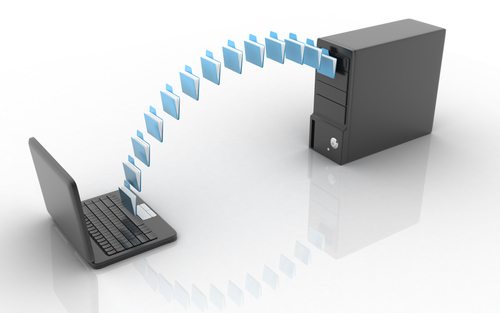Securing data relies upon making sense of it. To achieve this, organizations rely on two key concepts: Data Mapping and Data Lineage. While these terms are often used interchangeably, they refer to distinct processes with different objectives and implications. This article will explore the differences between Data Mapping and Data Lineage to help you better understand their roles and significance in data management.
What is Data Mapping?
Data Mapping defines how data elements from one system or source correspond to data elements in another method or destination. It is the blueprint for data integration, enabling organizations to transfer data seamlessly between systems, databases, or applications. Data Mapping is crucial for ensuring that data from diverse sources can be understood, manipulated, and utilized effectively within an organization.
Key Features of Data Mapping:
- Source-to-Target Mapping: Data Mapping involves identifying the relationships between data elements in the source system and their corresponding elements in the target system; this includes specifying data types, formats, and transformations necessary for accurate data transfer.
- Data Transformation: In many cases, data from the source system may not be directly compatible with the target system. Data Mapping includes defining data transformations, such as data type conversions, date format changes, and aggregations, to ensure data consistency and accuracy during integration.
- Data Validation: Data Mapping also involves setting up rules and validation checks to ensure the transferred data meets predefined quality and integrity standards.
- Documentation: Detailed documentation is a critical aspect of Data Mapping. It helps maintain transparency and provides a reference point for all stakeholders involved in data integration projects.
- Maintenance: Data Mapping is an ongoing process as data structures, systems, and business requirements change over time. Regular updates and maintenance of data maps are essential to keep data integration processes up to date.
Why is Data Mapping Important?
Data Mapping is crucial to data integration projects, migrations, and ETL (Extract, Transform, Load) processes. Here are some key reasons why it’s vital:
- Data Consistency: Data Mapping ensures that data remains consistent and retains its integrity when transferred from one system to another. It helps prevent data discrepancies and errors.
- Efficiency: Integration projects can become time-consuming and error-prone without a clear map of data relationships. Data Mapping streamlines the process, making it more efficient.
- Data Governance: Data Mapping supports data governance efforts by providing transparency into data flows and transformations, helping organizations maintain data quality and compliance.
- Business Intelligence: Effective Data Mapping enables organizations to harness data for business intelligence and analytics purposes, extracting valuable insights from their data assets.
What is Data Lineage?
Data Lineage, on the other hand, is the process of tracking and visualizing the journey of data as it moves through various systems, processes, and transformations within an organization. It provides a comprehensive view of data flow, illustrating how data is sourced, transformed, and consumed across different touchpoints.
Key Features of Data Lineage:
- End-to-end Visibility: Data Lineage offers end-to-end visibility into the data journey, from its origin, through all intermediary processes, to its final destination or consumption.
- Dependency Mapping: It identifies dependencies between different data elements and processes, showing how changes in one area may impact others.
- Impact Analysis: Data Lineage facilitates impact analysis by revealing the potential consequences of altering or removing specific data elements, helping organizations make informed decisions.
- Compliance and Audit: Data Lineage assists in compliance and audit activities by providing a clear record of data movement and transformations, ensuring data governance and regulatory requirements are met.
- Data Quality Monitoring: It helps organizations monitor and maintain data quality by identifying bottlenecks or issues in the data flow.
Why is Data Lineage Important?
Data Lineage offers several significant advantages for organizations:
- Data Governance: It supports robust data governance by providing transparency and accountability in data processes; this is crucial for ensuring data quality and compliance with regulations like GDPR or HIPAA.
- Data Trustworthiness: With Data Lineage, organizations can build trust in their data, as they can trace its origins and transformations, making it easier to identify and rectify any data quality issues.
- Change Management: Data Lineage aids in change management, allowing organizations to assess the impact of changes to data structures or processes before implementation.
- Operational Efficiency: By visualizing data flows and dependencies, Data Lineage helps organizations streamline their operations and optimize data processes for efficiency.
Key Differences: Data Mapping vs. Data Lineage
Now that we have a clear understanding of both Data Mapping and Data Lineage let’s highlight the key differences between the two:
- Purpose:
- Data Mapping: Defines the relationships between data elements in source and target systems to enable data integration and transformation.
- Data Lineage: Provides visibility into the entire data journey, helping organizations track data flow, dependencies, and impacts.
- Scope:
- Data Mapping: Primarily concerned with specific data integration projects or processes.
- Data Lineage: Offers a broader view, encompassing all data flows and transformations across an organization.
- Timing:
- Data Mapping: Typically, Data Mapping is done before or during data integration projects.
- Data Lineage: Data Lineage is an ongoing process that tracks data flow continuously.
- Level of Detail:
- Data Mapping: It provides detailed information about data structures, formats, and transformations, but it may cover only some of the data journey.
- Data Lineage: It offers a holistic view of data flow, including all processes and dependencies, but may not delve deeply into the specifics of data transformations.
- Use Cases:
- Data Mapping: Essential for data integration, migration, and ETL processes.
- Data Lineage: Crucial for data governance, compliance, impact analysis, and operational efficiency.
Data Mapping and Data Lineage are distinct yet complementary processes in data management. Data Mapping is the blueprint for data integration, defining how data elements move between systems and undergo transformations. On the other hand, Data Lineage provides a comprehensive view of the data journey, offering transparency, dependency tracking, and impact analysis.
Data Mapping and Data Lineage are crucial in ensuring data quality, governance, and efficiency within organizations. While Data Mapping focuses on specific integration projects, Data Lineage offers a broader perspective, making it an invaluable tool for organizations seeking to harness the full potential of their data assets.
To maximize the benefits of these processes, organizations should integrate Data Mapping and Data Lineage into their data management strategies, recognizing that each contributes uniquely to the overarching goal of data-driven success.
The opinions expressed in this post belongs to the individual contributors and do not necessarily reflect the views of Information Security Buzz.




